Anything put on or in a human body eventually ends up in the ground water. Add to that the chemicals fed to or put on domestic animals and plants. Billions of tons of medicines and chemicals per year will eventually make their way to the water table, streams, rivers and oceans. Such chemicals have been found in ocean water at coastal cities within the United States, especially around San Francisco.
Some of those chemicals include birth control medications, penicillin, thyroid medications, steroids, insulin, pesticides, insecticides, weed poison, DDT, fragrances, fire retardants, household detergents, polychlorinated biphenyls (PCBs), antidepressants, etc.
According to Irene Baron, when she taught water purification in high school Earth Science, she had access to USGS published results of studies concerning chemicals found in ground water, streams and rivers.
At one time, the amounts of estrogen found in waters throughout the United States created concern. Estrogen found in water was primarily chemicals from birth control pills excreted by females through urine. These chemicals have been in ground water since birth control pills came into existence for the public in 1960 as the first oral contraceptives. Imagine how much estrogen has been added to ground water since then.
A newly forming human embryo will absorb chemicals from beverages and food eaten by the mother and through her exposure to the environment. If the mother has exposure to extra estrogen from ground water, the estrogen will most likely affect the forming child.
An article in Scientific American stated, “Researchers have found evidence that even extremely diluted concentrations of drug residues harm fish, frogs and other aquatic species, and have been shown in labs to impair human cell functions.”
Ever wondered why fish are being found with intersex traits of both female and male parts? Or why male fish begin producing eggs?
Now, consider the fetus of a child which should naturally grow into a male child.
Give that child, at its critical life stage of dividing cells, an extraordinary amount of estrogen and imagine what happens. Just like animals in the wild exposed to such chemicals, a male human child may develop characteristics of the female.
Chlorine
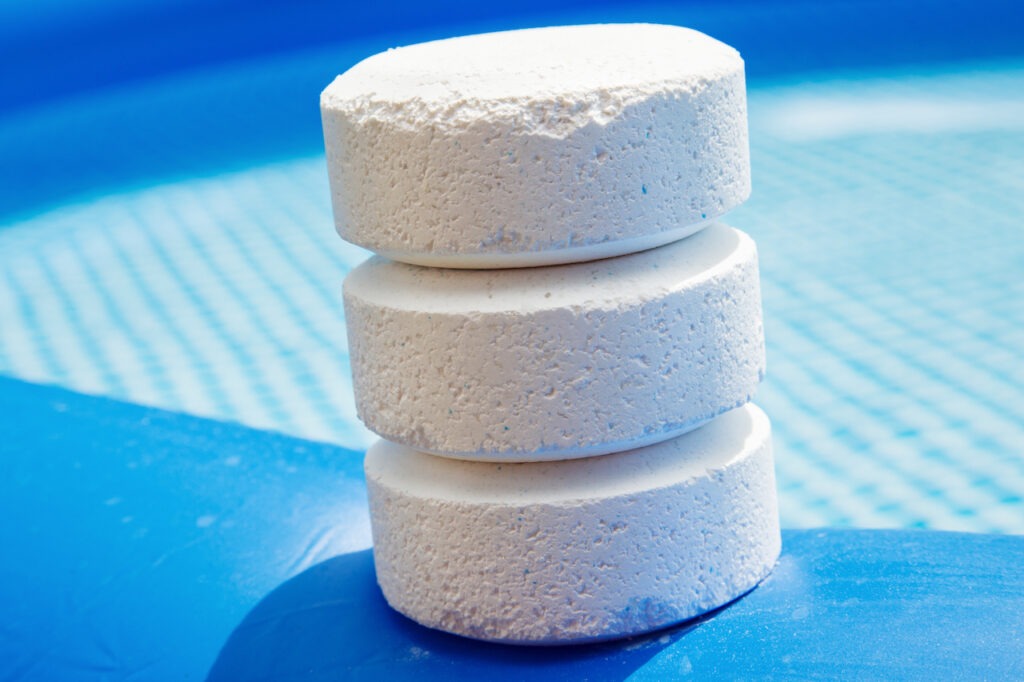
One of the most common disinfectants used in public water systems, chlorine can be harmful to your health. When ingested, chlorine can cause respiratory problems, skin irritation, and even cancer.
In addition, chlorine can also react with other organic matter in the water to form dangerous chemical byproducts such as chloroform. There are several ways to test drinking water for impurities and contaminants.
A total dissolved solids (TDS) meter is a portable device that is used to measure the level of TDS and conductivity of a water source. This is useful in detecting various types of impurities but for pinpointing chlorine as a particular impurity, using a test strip is a simple yet reliable method.
Other methods of testing for chlorine content in tap water include using chlorine test solutions, DPD chlorine testing tablets, and using a colorimeter.
Fluoride

Fluoride is a naturally occurring chemical that is added to many public water systems because it has been shown to help prevent tooth decay. However, fluoride can also be harmful if ingested or inhaled, causing symptoms such as nausea and vomiting, headaches, diarrhea, and even damage to your bones and teeth.
Fluoride can also affect thyroid hormones and make bones brittle unless it is taken out of tap water. If you want to prevent fluoride from poisoning you, buy a reverse osmosis water filtration system to take it out of the tap water.
One of several new studies was led by Stephen Peckham of the University of Kent in Canterbury, England. They compared 2012 national data on levels of fluoride in drinking water to trends for hypothyroidism (underactive thyroid) as diagnosed by family physicians across England.
They found that in locales where tap water fluoride levels exceeded 0.3 milligrams per liter, the risk for having an underactive thyroid rose by 30 percent.
Peckhams’s team also found that hypothyroidism rates were nearly double in urbanized regions that had fluoridated tap water, compared with regions that did not.
“Consideration needs to be given to reducing fluoride exposure,” the researchers wrote. They believe that public efforts to strengthen dental health should move away from fluoridated water and instead “switch to topical fluoride-based and non-fluoride-based interventions.”
Mezitis agreed that, while “fluoridation of the water supply is important for dental health, studies have also shown that iodine deficiency that may be caused by extra ingestion of fluoride is related to hypothyroidism.”
He added that “drinking water is fluoridated in the United States, where hypothyroidism is a highly prevalent disorder — affecting over 15 million individuals mainly female and greater than 40 years old.”
Another thyroid expert agreed that attention should be directed at fluoride in the drinking supply.
“This dramatic increase in thyroid dysfunction associated with fluoridation of the water supply adds to previous studies indicating that fluoride has an inhibitory effect on the thyroid gland,” said Dr. Terry Davies, a professor of medicine at the Icahn School of Medicine at Mount Sinai, in New York City.
The study “supports the argument that our water supply should be pure water and nothing else,” said Davies, who is also an endocrinologist at The Mount Sinai Hospital.
But the ADA’s Hewlett countered that other studies have not uncovered a link between fluoridated water and thyroid problems.
“A far more rigorous systematic evaluation of human studies conducted by the Scientific Committee on Health and Environmental Risks at the request of the European Commission does not suggest a potential thyroid effect at realistic exposures to fluoride,” he said. “Additionally, the 2006 Report by the U.S. National Research Council found no adverse effects on the thyroid even at levels more than four times greater than that used in fluoridation.”
And fluoride in the water supply protects dental health, Hewlett added. “Even with the widespread availability of fluoride toothpaste, studies show that community water fluoridation prevents at least 25% of tooth decay in children and adults throughout the lifespan,” he said.
The findings are published online Feb. 23 in the Journal of Epidemiology & Community Health.
According to the U.S. National Institutes of Health, the thyroid is a butterfly-shaped gland near the base of the neck that produces hormones. Thyroid hormones control the rate of many body activities, including how fast calories are burned and how fast the heart beats. If the thyroid gland isn’t active enough, it does not make enough thyroid hormone to meet the body’s needs.
Lead

Lead exposure poses a significant risk of both mental and physical illness. Symptoms of lead poisoning include depression, confusion, abdominal pain, kidney disease, memory loss, muscle weakness, weight loss, anemia, high blood pressure, poor coordination, pale skin, hair loss, seizures, infertility in men and women, delayed puberty in children… the list goes on.

The presence of lead in tap water does not necessarily indicate that the water contains lead; however, elevated levels of lead in tap water can be an indication that lead plumbing or service lines may be present. Lead also tends to accumulate in the body over time, so even low levels can be dangerous. pregnant women and young children are particularly at risk for lead poisoning.
In contrast to lead-tainted paint, dust, and soil, lead-bearing plumbing is present in almost every US building. Water flowing through such plumbing is ingested regularly by people of all ages, directly or through food.

Studies on lead in water and lead in blood have been published in peer-review journals for over half a century. The papers below were published in the last 15 years, after the historic Washington, DC lead-in-water crisis of 2001-2004. They provide scientific depth, complexity, and nuance necessary for understanding lead at the tap, enacting public health protective policies, and developing reliable public messaging about the problem. Several of the papers also show that oft-repeated claims about lead in water being a secondary or insignificant source of exposure are simplistic, misleading, and inaccurate.
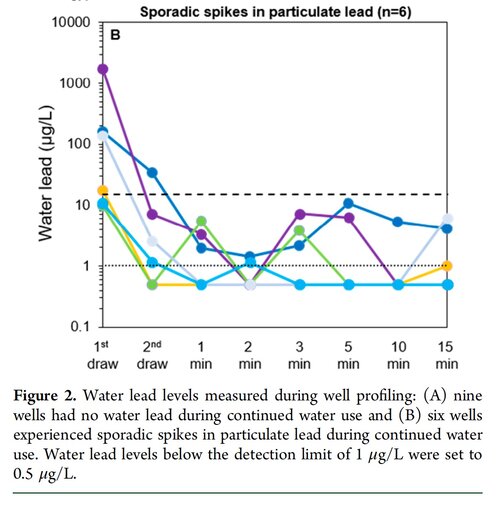
Lead from water can be the primary or even sole source of exposure in both the general population and vulnerable subgroups, such as fetuses and formula-fed infants.
Lead’s Effects on Children
Kids are exposed to lead through lead paint, contaminated soil, and contaminated drinking water, which remains a primary source of lead exposure. No level of lead exposure is safe for children, and blood lead levels lower than those that officially qualify as “poisoning” are still harmful to developing brains.

“We’ve known for a long time that early life lead exposure causes problems related to learning performance and cognitive deficits in children, but now that many lead-exposed [groups of children] have been followed into adulthood, we’re also seeing that later in life they’re more likely to have major depression, schizophrenia, and other psychiatric disorders,” Tomás R. Guilarte, professor, researcher, and director of the Brain Behavior & the Environment program at the Robert Stempel College of Public Health & Social Work at Florida International University, told EHN.
“There’s no question that even at low levels of exposure there are associations with neurodevelopmental and psychiatric disorders,” he added.
These findings have major implications in the U.S. and abroad. While bans on lead in paint and gasoline have had a positive impact, roughly one in three children around the world are still exposed to harmful levels of lead. “This is not a trivial problem,” Guilarte said.
In a survey of more than one million kids in the U.S., researchers earlier this year reported that more than half of children have detectable levels of lead in their blood. The exposure was worse for children of color: About 58% of kids from majority Black zip codes and 56% of kids from majority Hispanic zip codes had detectable levels of lead compared to 49% of kids from majority white zip codes.
In addition, about 186 million people in the U.S.—about 56% of the population—drank water from drinking water systems with lead levels above 1 part per billion (the level set by the American Academy of Pediatrics to protect children from lead in school water fountains) from 2018 to 2020, according to a report from the Natural Resources Defense Council.
Western Pennsylvania is particularly at risk:
- The percentage of Pennsylvania children with elevated blood lead levels is more than twice as high as the national rate;
- Blood lead levels in Allegheny County are declining overall, but not equitably: The percentage of children of color with confirmed elevated blood levels is six times greater than the percentage of white children with elevated blood lead levels;
- In 2019, lead was detected in 80% of water systems in Allegheny County;
- Among school districts in 10 Western Pennsylvania counties that tested drinking water for lead in 2019, 71% reported lead contamination, but less than half took action to remove it.
In October, the Centers for Disease Control and Prevention (CDC) lowered the threshold for blood lead levels considered “higher than average” from 5 micrograms per deciliter to 3.5 micrograms per deciliter.
This shift will mean that many more children in Allegheny County and across the country will be considered to have blood lead levels requiring intervention. Currently, when a child is found to have a blood lead level higher than the CDC’s previous threshold of 5 micrograms per deciliter in Allegheny County, the Allegheny County Health Department offers a free home investigation to test water, dust, and soil samples for lead.
Chris Togneri, the health department’s public health information officer, told EHN the agency is still reviewing the CDC’s revised threshold to consider updating that policy.
In addition to its lead exposure and drinking water issues, western Pennsylvania also bears a substantial burden of mental illness.
From 2018-2020, 40% of adults in Allegheny County reported having one or more days where their mental health was “not good,” according to state data, a figure that’s higher in Allegheny County than in half of other Pennsylvania counties, and slightly higher than state averages. An estimated 13% of adults in Allegheny County said their mental health was not good for 14 or more days a month.
A survey conducted by the Allegheny County Health Department from 2015-2016 indicates the issue is even more serious among non-white residents: 48% of Black and 47% of Hispanic residents said their mental health was “not good” for one or more days a month, compared to 42% of white residents.
Togneri said the Allegheny County Health Department works to address disparities in lead exposure through an index which ranks census tracts where children are more vulnerable to lead exposures based on factors like race, poverty level, and the age of housing.
“We do increased outreach in the areas that are identified as being at higher risk levels,” he said. “As is the case in all departments, more resources would allow for greater outreach.”
In Pittsburgh, the number of pediatric patients seeking mental health treatment has increased by 30% since the spring of 2020. Meanwhile, Pennsylvania is experiencing a statewide shortage of mental health care workers, and in Pittsburgh therapists are quitting their jobs in droves because of burnout.
Arsenic
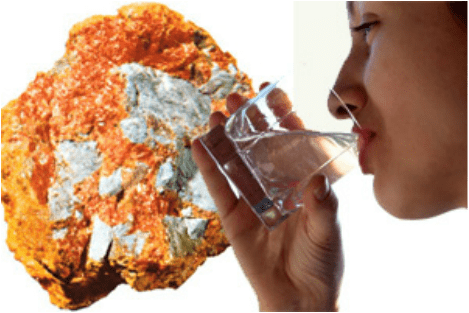
Arsenic is a naturally occurring chemical element. It can be found in food, water, air, and soil. Found mainly in the form of arsenate and arsenite, arsenic is a heavy metal that can cause headache, nausea, vomiting, diarrhea, thirst, drowsiness, confusion, kidney failure, coma… again the list goes on.
Residential exposure to the substance comes from multiple sources including pesticide residues on foods, contaminated drinking water supply, natural wells, or other private water systems. Arsenic has been linked to several kinds of cancer, cardiovascular disease, and diabetes mellitus, according to the Agency for Toxic Substances & Disease Registry (ATSDR).
Arsenic is not removed by most tap filters. The presence of arsenic in drinking water is regulated by the U.S Environmental Protection Agency (EPA) at 10 parts per billion (ppb), but some scientists say that number should be three times lower due to health risks associated with exposure.
Radon
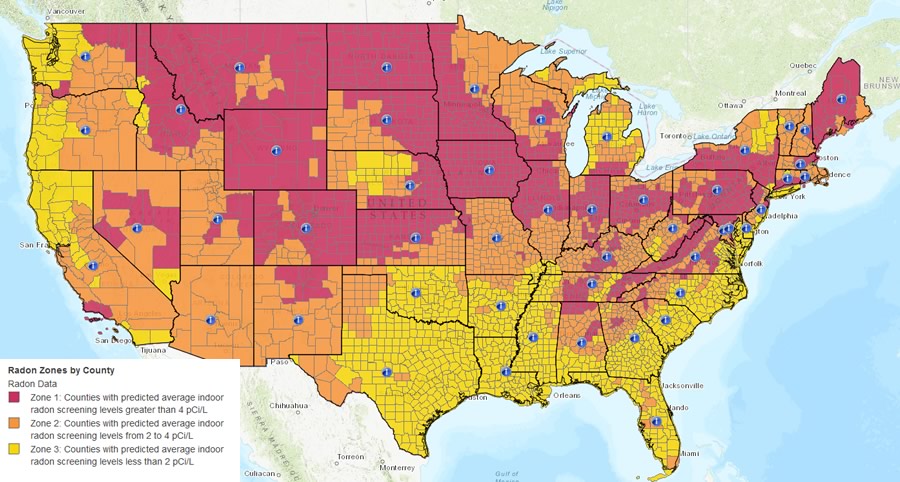
A colorless gas occurring naturally as part of the decay process of uranium found deep within the earth’s crust; radon exposure poses significant health risks. When radon is introduced into your home (for example through contaminated drinking water), you and your family could inhale dangerous concentrations of the chemical, leading to an increased risk for cancer.
In fact, exposure to radon is the second leading cause of lung cancer after smoking.
PCE

Early childhood exposure to water contaminated with the solvent tetrachloroethylene (PCE) increases the risks of bipolar disorder and post-traumatic stress disorder, a study by BU School of Public Health researchers found.
The study, published in the journal Environmental Health, found that while there was no association between PCE exposure and the incidence of depression, people with prenatal and early-childhood exposure had almost twice the risk of bipolar disorder compared to an unexposed group. The risk of PTSD (post-traumatic stress disorder) was raised by 50 percent. Those with the highest exposures reported the highest rates of the two mental illnesses.
PCE, a solvent used in dry-cleaning and other industries, is a neurotoxin known to cause mood changes, anxiety, and depressive disorders in people who work with it. To date, the long-term effects on children exposed to PCE have been less clear.
From 1968 until the early 1980s, water companies in Massachusetts installed vinyl-lined water pipes that were subsequently found to be leaching PCE into the drinking water supply. Researchers from BUSPH have been studying the effects of that exposure on both children and adults who were living on Cape Cod. The new study focused on prenatal and early-childhood exposure in eight towns: Barnstable, Bourne, Falmouth, Mashpee, Sandwich, Brewster, Chatham, and Provincetown.
Ann Aschengrau, professor of epidemiology at BUSPH and the study’s lead author, said that while it is impossible to calculate the exact amount of PCE people were exposed to, “levels of PCE were recorded as high as 1,550 times the currently recommended safe limit.
“While the water companies flushed the pipes to address this problem,” she added, “people are still being exposed to PCE in the dry cleaning and textile industries, and from consumer products, and so the potential for an increased risk of illness remains real.”
While the study examined the association between PCE exposure and schizophrenia, the authors said the number of schizophrenia cases was too small to draw reliable conclusions. In addition, they noted that the study relied on self-reports of mental illness, with subjects asked if a health care provider had ever diagnosed them with a mental disorder.
The new study comes on the heels of another BUSPH study that found children exposed to PCE-contaminated drinking water before birth and in early childhood were more likely to use illegal drugs later in life. That study, also published in Environmental Health, found that people with high exposure levels during gestation and early childhood had a 1.5- to 1.6-fold increase in the risk of using two or more illegal drugs as teenagers or adults. Specific drugs for which increases were observed included cocaine, hallucinogens, club drugs, and Ritalin without a prescription.
Besides Aschengrau, the team of BUSPH researchers on the new study includes: Janice M. Weinberg, Patricia A. Janulewicz, Megan E. Romano, Lisa G. Gallagher, Michael R. Winter, Brett R. Martin, Veronica M. Vieira, Thomas F. Webster, Roberta F. White and David M. Ozonoff.
The research was funded by the National Institute of Environmental Health Sciences Superfund Research Program.
Microorganisms
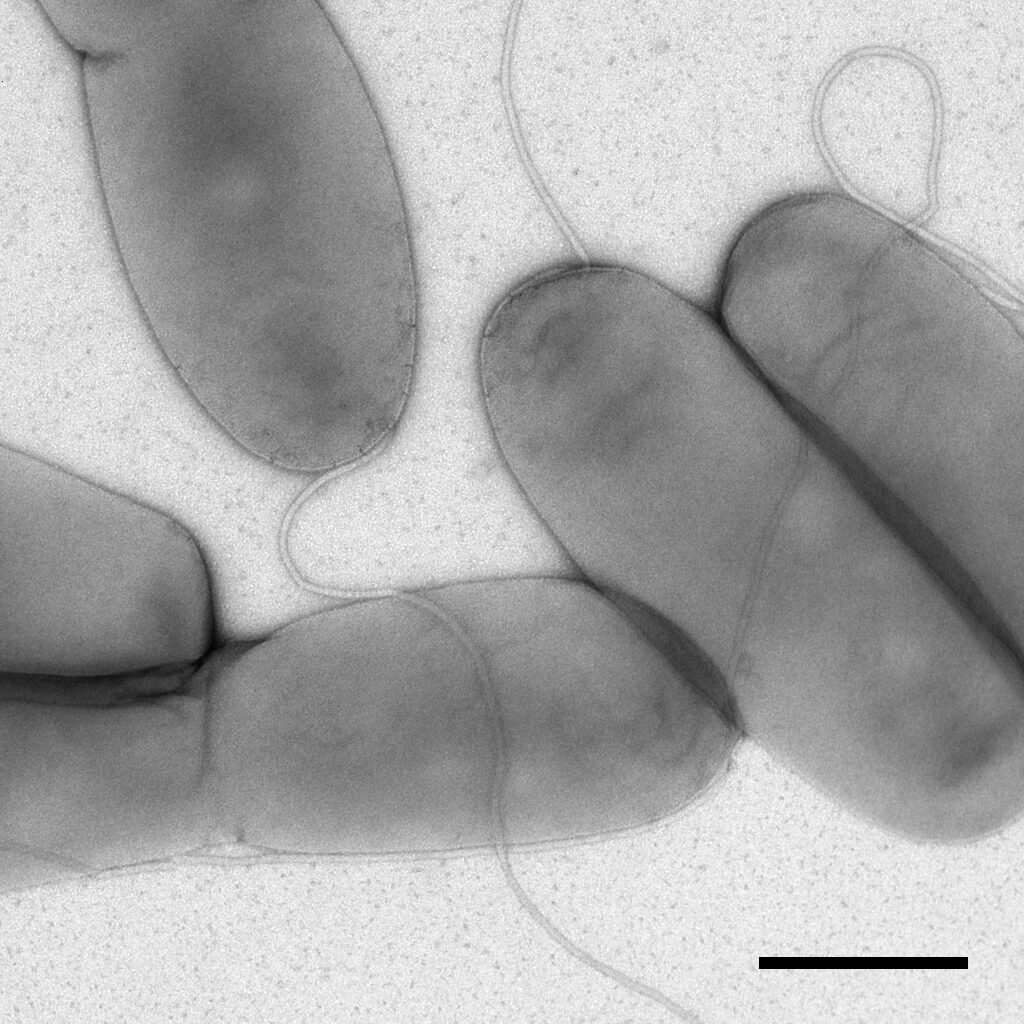
Norbert Bannert, Gudrun Holland/RKI
Though not a health hazard in themselves, microorganisms such as viruses, bacteria, and parasites can pose serious risks when found in drinking water. For example, Cryptosporidium is a parasite that causes gastrointestinal illness when ingested. Viruses such as Rotavirus have been shown to cause diarrhea.
In addition, Legionella pneumophila is a bacterium responsible for causing Legionnaires’ Disease—a severe type of pneumonia with flu-like symptoms.
Though the water delivered to your taps may seem safe, it can actually contain a number of harmful chemicals and contaminants. It is important to be aware of these hazards and take steps to protect yourself and your family from their ill effects.
Installing a water filtration system is one way to reduce your exposure to these dangers, but you should also be sure to regularly test your water for contaminants. If you notice any problems with your water quality, be sure to take action right away.
Antidepressants and Other Drugs
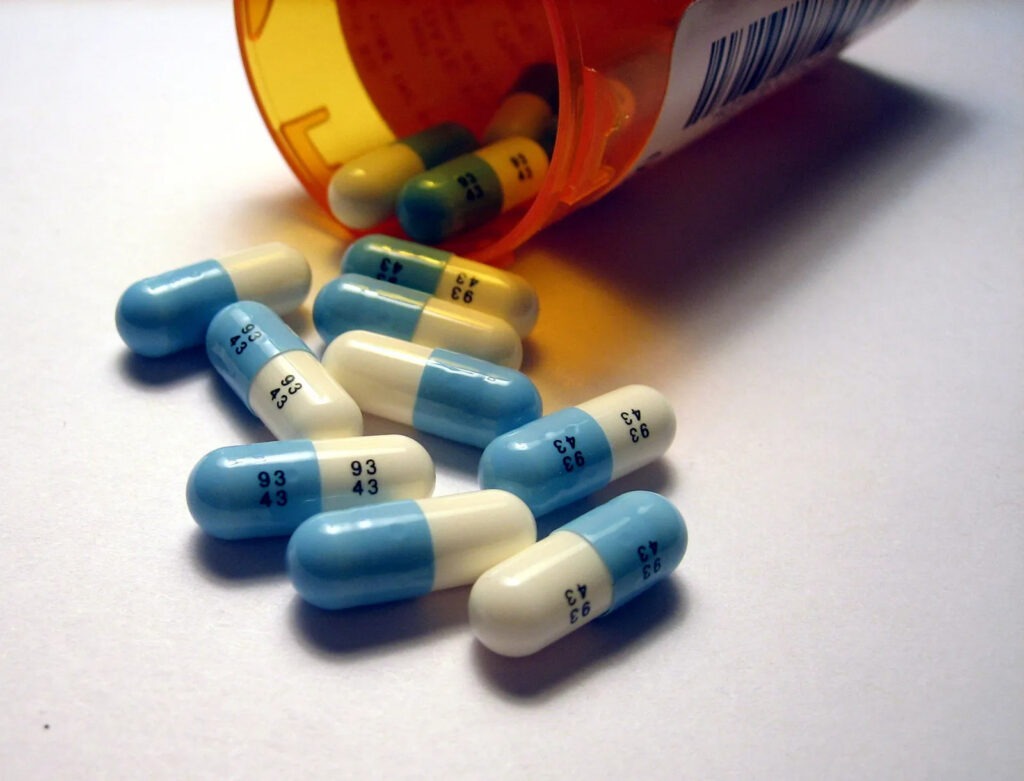
Scientists in Great Britain have found levels of a common antidepressant in the water. What about the drinking water in the U.S.? Should we be concerned?
Similar problems have been discovered both with prescription and nonprescription drugs in the U.S. and throughout Europe.
In 2002, the U.S. Geological Survey (USGS) released the first study of pharmaceuticals, hormones, and other organic wastewater-related chemicals in streams across the nation. Most sites were downstream of urban and farming areas where wastewater is known or suspected to enter streams.
The study showed that:
- Pharmaceuticals, hormones, and other organic wastewater-related chemicals have been detected at very low concentrations in streams across the U.S.
- Many of the chemicals examined (81 of 95) do not have drinking-water standards or health advisories. Measured concentrations of compounds that do have standards or criteria rarely exceeded any of them.
- Among the chemicals detected were: human and veterinary drugs (including antibiotics), natural and synthetic hormones, detergents, plasticizers, insecticides, and fire retardants.
- Some of the compounds most frequently detected include: coprostanol (a fecal steroid), N-N-diethyltoluamide (an insect repellant), caffeine, triclosan (an antimicrobial disinfectant), tri (2-chloroethyl) phosphate (a fire retardant), and 4-nonylphenol (a detergent by-product).
- 38 chemicals were found in a single water sample.
An update on that report will be released, says Herb Buxton, coordinator of the United States Geological Survey’s Toxic Substances Hydrology Program.
The news is not good: “The compounds we use in small amounts can get significantly concentrated because of how we handle wastewater,” Buxton tells WebMD. “Our filtration systems aren’t built to treat these kinds of chemicals — organic chemicals. We need more sophisticated technology to filter them.”
Most problematic, Buxton says, is whether antibiotics in the environment cause antibiotic resistance. Also, could natural human hormones as well as synthetic hormones (birth control pills, hormone supplements, and estrogen-like compounds such as detergents) affect fertility?
His data will be used by the American Waterworks Association, the EPA, the FDA, and other agencies to address those questions.
Nitrochloroform
Antidepressants like Prozac and stimulants like methamphetamine may well be responsible for creating one of the most potent toxins found in tap water.
Nitrochloroform was used as a tear gas in world war I, and this toxic compound can form during the water disinfection process. Researchers have now proposed a solution to the decades-old chemical mystery of how it forms, pointing the finger at certain amine drugs. Taken together with evidence that these disinfection byproducts have been linked to bladder cancer, it could change the way drinking water is treated.
Recycling wastewater is becoming more common in areas where droughts are frequent and local water supplies unreliable, such as Australia, Namibia or California. To restore sewage to drinking water quality, it first goes through regular wastewater treatment. Then, it is funnelled through several disinfection and purification stages to kill microorganisms and remove chemical impurities.
But sometimes, the process does exactly the opposite: ozone treatment followed by chlorination dramatically increases the amount of nitrochloroform – also known as chloropicrin, Cl3CNO2 – in the resulting drinking water. While this had been known since the 1980s, how and from what the potent genotoxin forms had remained an open question.
Daniel McCurry and Jiaming Shi from the University of Southern California, US, have now shown that likely precursors for nitrochloroform are N-methylamine drugs like fluoxetine (Prozac), ephedrine and methamphetamine – all of which have been found in wastewater. When they come into contact with ozone, the amines reacts to form nitromethane, which during chlorination converts into nitrochloroform.
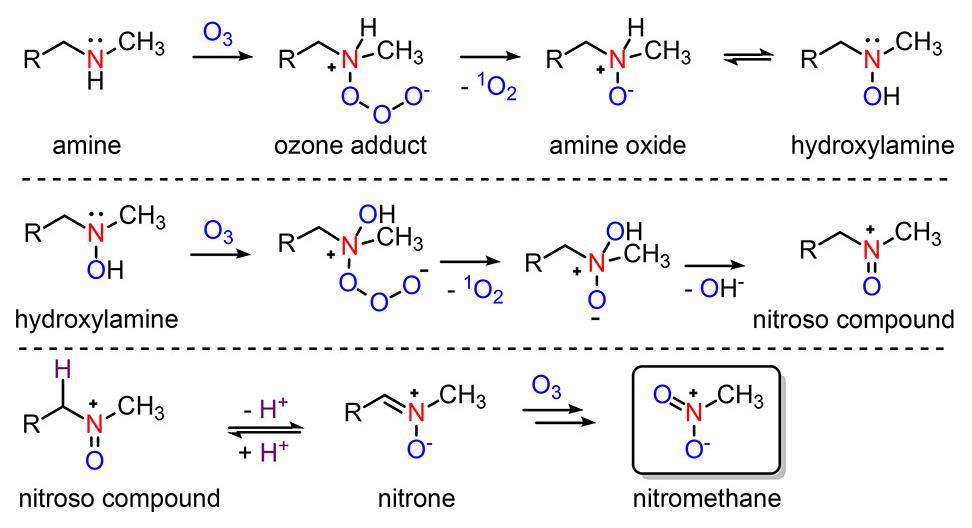
American Chemical Society
‘We got a bunch of different wastewater and ozonated it, and it all very consistently forms up to about 30µg/l nitromethane, which, in the disinfection byproducts world, is a super high concentration,’ McCurry explains. He and Shi then proved that 10 different amine drugs also react with ozone to form nitromethane.
‘This is the first study I know of to present a mechanistic explanation for [halonitromethane] formation via precursor compounds,’ comments Shannon Roback, associate director of an interdisciplinary centre focusing on drinking water research at the University of California, Irvine, US. Finding that the toxin likely comes from anthropogenic compounds that didn’t exist when many drinking water plants were built, underscores the need to update disinfection techniques, she says.
While McCurry points out that these are lab studies that don’t – yet – directly connect nitromethane to drugs in real wastewater, it is the first time nitromethane has been identified as the common intermediate in the formation of halonitromethanes more generally. ‘If we want to solve this halonitromethane problem, all we have to do is figure out how to get rid of nitromethane,’ McCurry tells Chemistry World.
‘Due to preferential formation of nitromethane by ozone, the most obvious solution would be to avoid the ozonation process during water treatment,’ suggests Roback. But she adds that often funding, rather than available technology, dictates how water is treated.
And trying to eliminate one disinfection byproduct can turn into a whack-a-mole game, adds McCurry. When the US government started to regulate chloroform in the early 1990s, its levels in tap water went down. At the same time, levels of N-nitrosodimethylamine, which is just as toxic, shot up.
McCurry is now trying to find out which treatment processes get rid of nitromethane , and so should prevent the formation of nitrochloroform. So far, the best option seems to be biologically active filtration, which puts bacteria in charge of breaking down harmful chemicals.
The Effects on Humans May Vary
“The core problem is — there’s nothing really in the design of most treatment plants to take this stuff out,” says Robert Morris, MD, PhD, an environmental health consultant and professor at Tufts University. “This is a truly daunting problem. Treatment systems were all initially designed to get rid of bacteria and viruses. They have filters and use chlorine, but that doesn’t do a whole lot to get rid of chemical contaminants.”
Whether these water contaminants have effects on humans is still an open question, Morris tells WebMD. “The presumption has been that the stuff gets so diluted that it won’t cause a problem. Whether or not that’s true is another issue. People used to think that about microbes and bacteria, and discovered they were pretty wrong about that.”
The effect may vary from town to town. “This stuff is coming out of sewage treatment plants. The [size of] the plant, the amount that’s coming out of it, and the size of the river or lake determine the concentration of chemicals in drinking water. So it’s going to vary a lot. It may be that specific regions of the country have a worse problem.”
So what are the effects over a lifetime — or during particularly vulnerable stages such as pregnancy? “We don’t really know,” Morris says. “There’s evidence that concentrations coming out of treatment plants have an effect on things living in the water. They’re obviously going to get the highest exposure. Whether the lower exposure has an effect on humans, we don’t know.”
Should We Just Drink Bottled Water Instead?
Bottled water is “an expensive solution, and it produces a lot of plastic that needs be disposed,” Morris says. “I don’t see that as an ideal solution.”
According to the data, if a woman is pregnant or trying to get pregnant, that’s the time to be most careful — drink bottled or filtered water, he advises. “That’s especially true if your water is coming from a major river system or water source that has a lot of sewage treatment plants going into it. That’s where you have to be concerned.”
A healthy adult won’t likely feel major effects from these drugs, adds Morris. “But boy, I’d like to see us gather more data on this. The list of chemicals being produced is huge. The mixture coming down these waterways contains many, many chemicals. We don’t know how they interact. We don’t know their total effect. I don’t want to scare people. There’s no cause for panic. But certainly there is more cause for getting more information.”
- https://irenebaron.com/blogs/irene-baron-blog/posts/is-homosexuality-caused-by-waterborne-estrogen
- https://www.water-for-health.co.uk/our-blog/2015/05/sorry-did-you-just-say-there-are-hormones-in-my-tap-water/
- https://en.m.wikipedia.org/wiki/Prenatal_hormones_and_sexual_orientation
- https://www.newscientist.com/article/dn7440-gender-bending-chemicals-found-to-feminise-boys/
- https://www.science.org/content/article/homosexuality-may-start-womb
- https://www.ncbi.nlm.nih.gov/pmc/articles/PMC3296090/
- https://www.alleghenyfront.org/how-contaminated-water-contributes-to-mental-illness/
- https://www.ehn.org/water-pollution-and-mental-health-2655532533/credit
- https://ourfamilylifestyle.com/most-common-health-hazards-found-in-tap-water/
- https://www.campaignforleadfreewater.org/the-science
- https://ehjournal.biomedcentral.com/articles/10.1186/1476-069X-11-2
- https://www.bu.edu/sph/news/articles/2012/pce-in-drinking-water-linked-to-increased-risk-of-mental-illness/
- https://www.webmd.com/depression/news/20040810/prozac-in-drinking-water-likely-so
- https://www.chemistryworld.com/news/prozac-and-methamphetamine-likely-responsible-for-toxins-in-tap-water/4011268.article
- Child Rapist and Ex-Rockstar Ian Watkins Has Been Cleansed from Society - October 13, 2025
- Was the Shooting of Charlie Kirk a False Flag Operation? - September 30, 2025
- MGTOW Is Ruining Young Men’s Lives - September 28, 2025





















